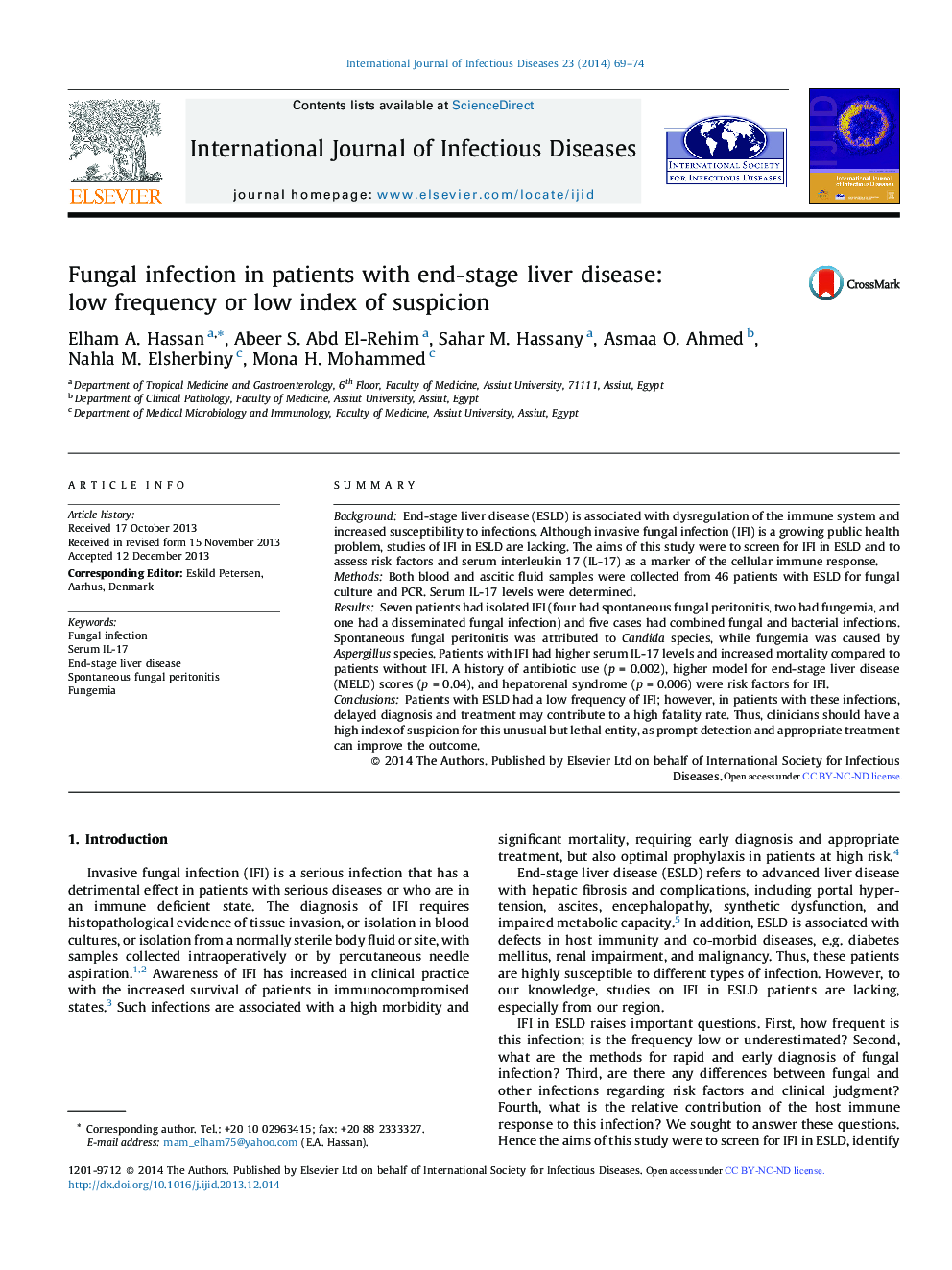| Article ID | Journal | Published Year | Pages | File Type |
|---|---|---|---|---|
| 3362462 | International Journal of Infectious Diseases | 2014 | 6 Pages |
SummaryBackgroundEnd-stage liver disease (ESLD) is associated with dysregulation of the immune system and increased susceptibility to infections. Although invasive fungal infection (IFI) is a growing public health problem, studies of IFI in ESLD are lacking. The aims of this study were to screen for IFI in ESLD and to assess risk factors and serum interleukin 17 (IL-17) as a marker of the cellular immune response.MethodsBoth blood and ascitic fluid samples were collected from 46 patients with ESLD for fungal culture and PCR. Serum IL-17 levels were determined.ResultsSeven patients had isolated IFI (four had spontaneous fungal peritonitis, two had fungemia, and one had a disseminated fungal infection) and five cases had combined fungal and bacterial infections. Spontaneous fungal peritonitis was attributed to Candida species, while fungemia was caused by Aspergillus species. Patients with IFI had higher serum IL-17 levels and increased mortality compared to patients without IFI. A history of antibiotic use (p = 0.002), higher model for end-stage liver disease (MELD) scores (p = 0.04), and hepatorenal syndrome (p = 0.006) were risk factors for IFI.ConclusionsPatients with ESLD had a low frequency of IFI; however, in patients with these infections, delayed diagnosis and treatment may contribute to a high fatality rate. Thus, clinicians should have a high index of suspicion for this unusual but lethal entity, as prompt detection and appropriate treatment can improve the outcome.
